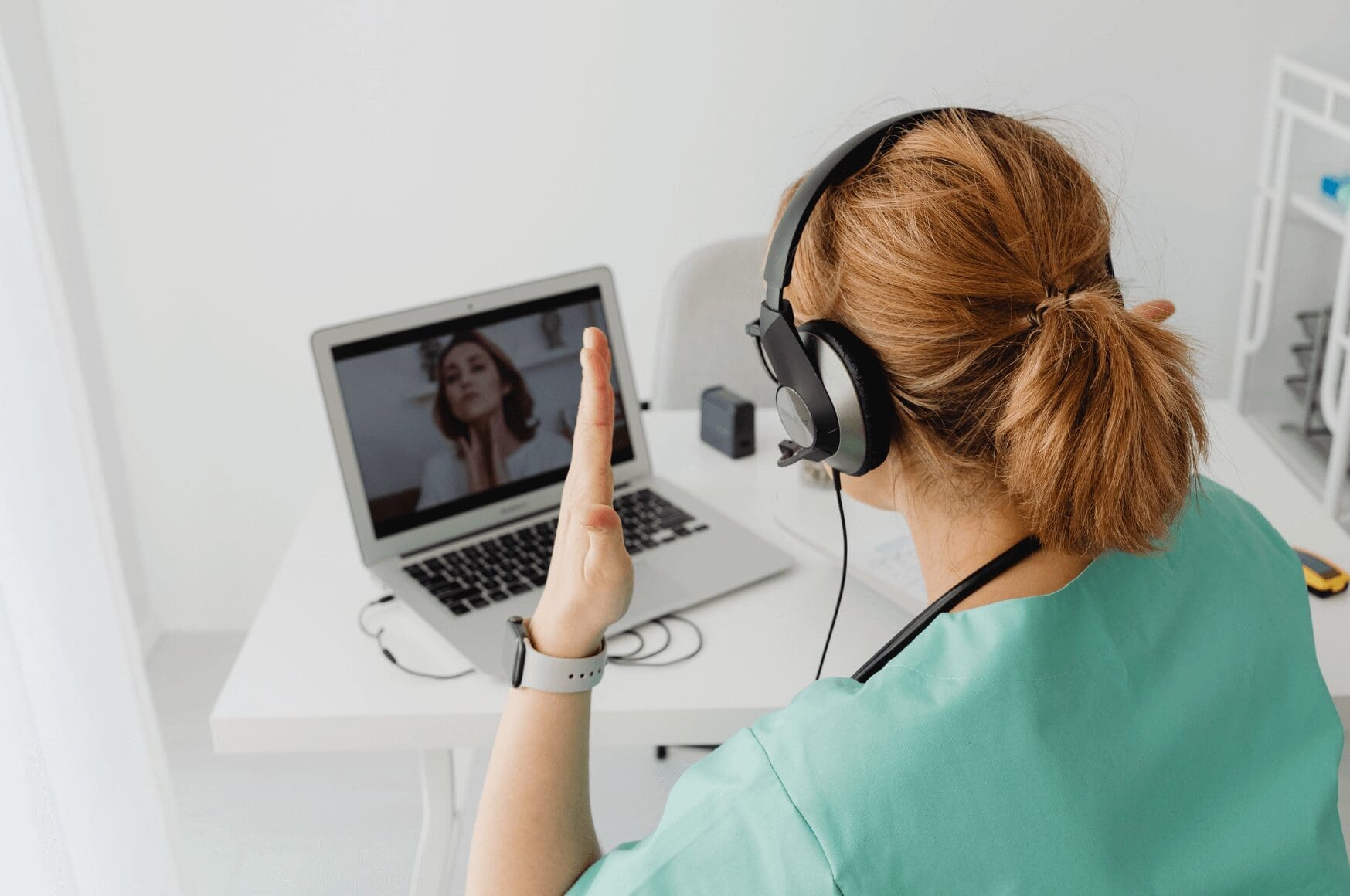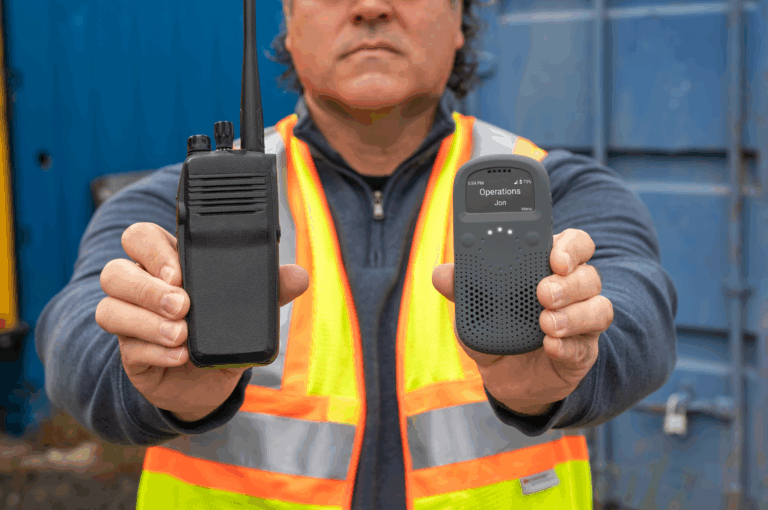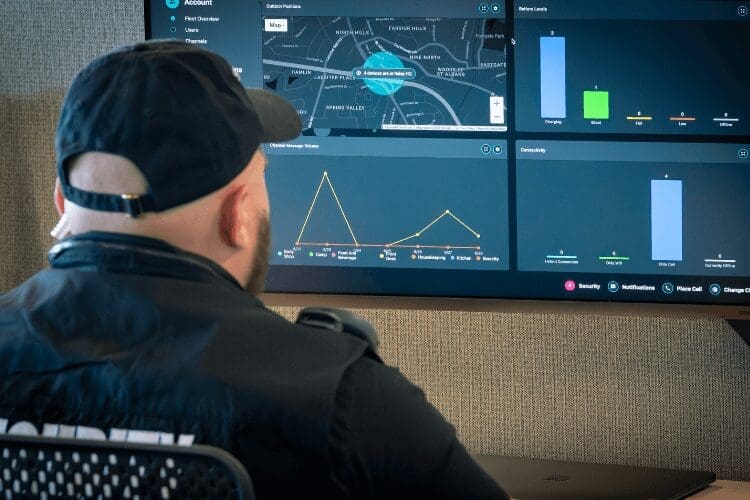The healthcare industry has evolved significantly over time, especially in terms of communication systems. Over the years, many technologies and methods have been introduced, offering reliable, efficient, and secure information exchange among healthcare professionals and staff.
As we move further into 2025, several key trends are emerging that are poised to reshape how healthcare professionals interact, collaborate, and deliver patient care – here are a few communication system trends and innovations in healthcare that are seeing growth in 2025.
1. AI-Powered Automated Alerts
Healthcare is a fast-paced environment where things can change instantaneously. Timely and rapid information is key to providing effective patient care, but manual processes can slow this down. AI-powered automated alert systems have emerged as a solution to respond more promptly.
Research conducted at Mount Sinai Hospital revealed that hospitalized patients whose care teams received AI-generated alerts about adverse health changes were 43% more likely to receive timely escalated care and experienced better overall outcomes.
AI-driven automated alerts are effective for facilitating early intervention and helping reduce alert fatigue. While alerts are essential, excessive or non-specific notifications can lead to “alert fatigue,” where healthcare professionals become desensitized and potentially overlook critical information.
A Vanderbilt University Medical Center study demonstrated that AI could help reduce the number of non-actionable alerts, minimizing disruptions and allowing clinicians to focus on the situation.
2. Patient portals
Patient portals are becoming increasingly important in modernizing patient communications while being HIPAA-compliant. Patient portals have an immense amount of features allowing both healthcare staff and patients to access and view data. Healthcare staff can upload important documents, test results, and other information relevant to the patient.
Patients can also upload materials, request prescriptions, and manage their care in a more centralized way. Patient portals also include features for secure messaging, allowing for a safe, encrypted channel for treatment updates, and questions, and providing additional information.
According to a report by the Office of the National Coordinator for Health IT, over 60% of patients in the U.S. now access their medical records via patient portals, a number that continues to rise as healthcare organizations prioritize digital communication.
Patient portals are an incredibly convenient solution as they streamline communication while reducing administrative burden. Phone calls and in-person visits are reduced as patients and staff can communicate asynchronously.
Routine questions can be answered via secure messaging without having to experience long holds or delays. Additionally, patient portals improve medication adherence and post-treatment follow-ups by sending reminders, reducing the likelihood of missed prescriptions or follow-up appointments.
3. AI-Powered Translation and Multilingual Communication Tools
As healthcare systems serve increasingly diverse populations, language barriers remain a critical challenge in patient-provider communication. Miscommunication can lead to medical errors, reduced patient satisfaction, and delayed care, which is why solutions to bridge language gaps are crucial in improving patient outcomes.
Solutions such as AI-driven translation tools and real-time multilingual communication platforms have the potential to transform how healthcare professionals interact with patients. For example, smart AI-powered translation services—such as speech-to-text applications, AI interpreters, smart radios, and multilingual chatbots—help providers quickly translate medical instructions, prescriptions, and discharge summaries into a patient’s preferred language.
According to data from 2021, there are approximately 25 million people with Limited English Proficiency (LEP) and they are typically more likely to report poorer health and worse health outcomes. For individuals with LEP, there is a great need for effective methods that patients and doctors can use to communicate with one another. AI-based translations and multilingual communication tools can help speed up procedures and processes whilst ensuring patients feel comfortable even if they have limited proficiency in English.
4. 5G & Wi-Fi 6
Modernization is crucial for healthcare teams looking to improve patient care and collaboration with one another. Next-generation networks like 5G and Wi-Fi 6 are steadily being introduced to healthcare communications at a steady rate to ensure that teams have the right tools.
Wider 5G coverage and Wi-Fi 6 have many benefits for healthcare communications, whether integrated with other technology or upgraded current equipment. These provide faster speeds, lower latency, and improved reliability. They also eliminate dead zones in large hospital campuses and mobile healthcare settings, ensuring critical data and alerts are delivered in real-time.
5. Hands-Free & Wearable Communication Tools
Modern devices such as smart badges, headsets, and body-worn cameras are steadily evolving to offer greater communication for healthcare teams. These devices now feature various push-to-talk capabilities and voice activations, allowing for swift communication without using multiple devices.
Some also come with additional features, such as noise-canceling technology to ensure clear audio even in high-pressure environments, such as emergency rooms. Hands-free and wearable tools can also improve response times and operational efficiency.
Smart radios are one of the emerging wearable devices within this trend gaining traction. They provide real-time, push-to-talk (PTT) communication, enabling instant connectivity among healthcare teams.
Smart radios can be helpful for single locations or a network of locations, such as multiple hospitals or clinics. During the pandemic, Sinai Chicago transitioned to a smart radio system, which improved incident response, emergency management, and hospital administration.
Smart radios also integrate technologies such as Wi-Fi, LTE, and GPS. This integration allows for features like real-time location tracking, secure data transmission, and access to critical applications directly from the device. Communication is end-to-end encryption, ensuring complete security and compliance.
Embracing the Future of Communication Systems in Healthcare
Healthcare communication is undergoing a shift and continually evolving across different technologies. Innovations in healthcare communication are now offering greater connectivity, collaboration, and security for teams. These tools also empower healthcare teams to improve efficiency, response times, and patient outcomes.
By adopting these advanced communication tools, healthcare organizations can enhance patient and staff safety and maintain compliance with regulatory standards. New tools and innovations in healthcare communications allow organizations to streamline internal workflows and processes and steadily improve their approach to and management of patient care.
Healthcare facilities like Mobridge Regional Hospital and Horizon Health are improving patient response times with Relay.
You can learn more about how Relay solutions enable healthcare teams to communicate more efficiently through cloud-based communication platforms here.







